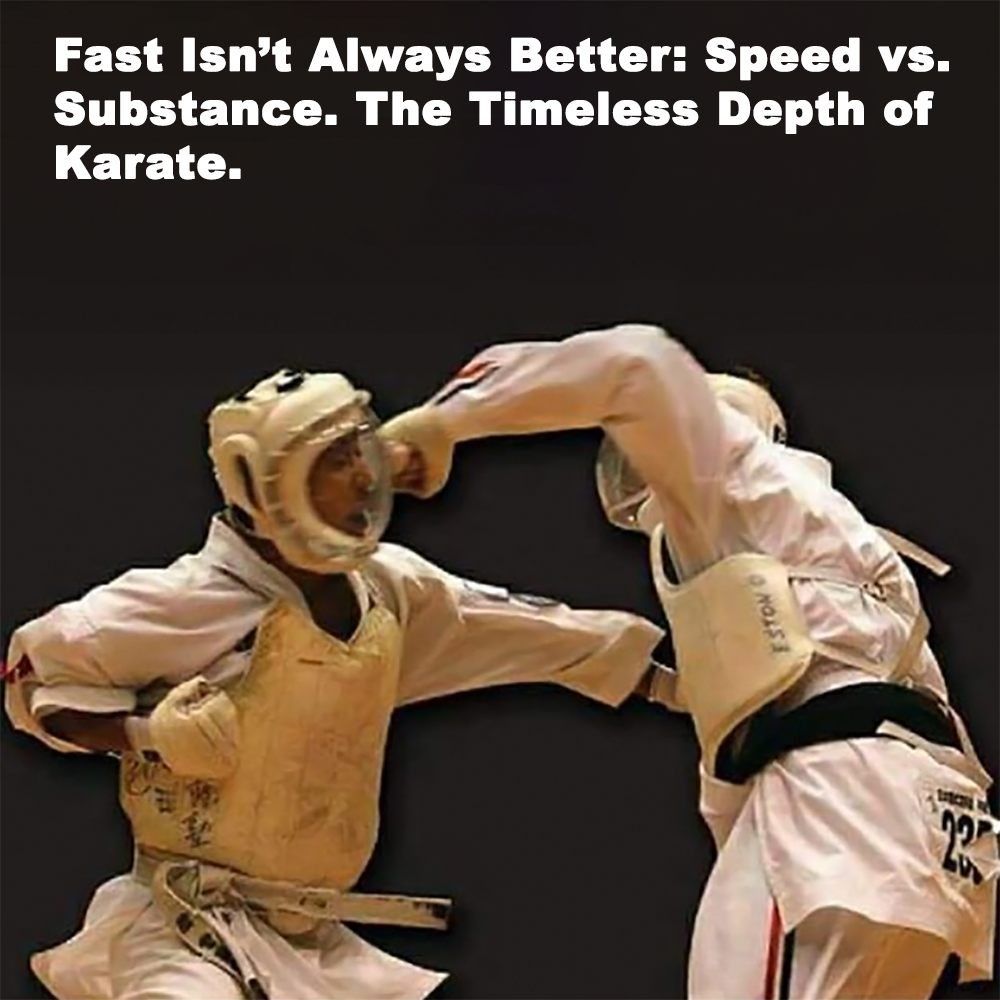
Fast Isn’t Always Better: Speed vs. Substance. The Timeless Depth of Karate.
Posted by ADAM CARTER on AUG 21, 2024

Beneath the Surface: Kata’s Hidden Wisdom and the Lessons of Karate’s Most Misunderstood Practice.
Many practitioners are searching for more in their karate practice. They’ve seen modern disciplines like MMA and realized that the karate they’ve been learning doesn’t quite measure up to what they’ve witnessed.
If we want our students to truly grasp the concepts, principles, and ideas of realistic karate, they must experience these things in a way that goes beyond mere instruction and rote memorization. To truly understand and retain the material, they need to actively engage with it.
The truth is, just because you’ve covered a topic doesn’t mean your students have learned it.
Over the years, karate has fundamentally changed from its origins – a transformation by design to ensure its survival.
Recently, someone said to me, “What I teach takes less time than karate.”
Perhaps you do. However, karate has evolved, and now we incorporate much more than when it was originally created. Why? Because it’s enriching. It’s about more than just techniques; it’s about culture, language, history, self-discipline, meditation, and so much more. It’s applicable to all, not just the select few athletes.
Of course, if someone is looking for a quick way to learn just fighting techniques, karate can offer that too. But in reality they might find another system more appealing. Superficial learning leads to superficial understanding. Karate, with its depth and breadth, offers something more – something that requires time and dedication but yields something far more profound and lasting.
To help students truly learn, we can incorporate activities that allow them to see patterns, connect to previous knowledge, and engage with the material, simply telling students to ‘pad up’ and fight isn’t enough.
Teaching isn’t an exact science, and no instructor designs perfect lessons every time. But if you’re not seeing the results you want from your students, consider adding more interactive elements to your instruction.
When planning your lessons, ask yourself: Are my students actively doing something with the material, or am I just setting it up for ‘information in’, ‘information out’?
Ultimately, teaching is about facilitating true learning. When students engage deeply with the material, they don’t just memorize – they internalize and live it.
Written by AC
